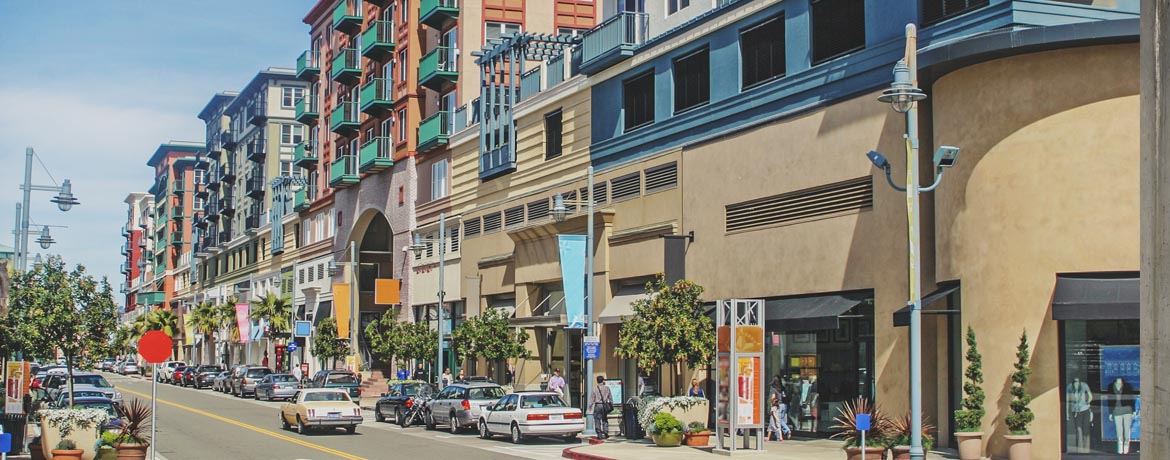Transit-oriented developments (TODs) are an urban planning mainstay. The major driver behind TODs is a “revival” of sorts for neighborhoods long-forgotten in favor of the suburbs. For many, that translates into convenience: these concentrated centers are within walking distance from home, shopping and work. These deliberately-planned, mixed-use developments are typically located within a half-mile of a mode of public transportation as well, unlocking the possibility that residents and visitors alike can give up their cars altogether.
Giving up cars altogether?
While it’s certainly not plausible that all of them would disappear from transit-oriented developments, many hope that TODs would encourage drivers to give up their cars. Even if a significant percentage of residents would give up car ownership, TODs still need ample parking: for visitors, out-of-town employees and for residents who need a car to access areas served less-adequately by public transportation.
Luckily, many TODs have ample parking. Even though the trend leans toward less car ownership, local law has not caught up and most municipalities still require a surplus of spaces. This means that TODs actually end up with far more parking than is actually necessary, so space to park is rarely an issue.
Problem solved, right? Not exactly. Even if there are plenty of spaces available, it doesn’t mean that transit-oriented developments are immune to the parking woes faced in cities, office buildings, airports and many other types of properties. TODs can still experience parking-related headaches, even with this abundance of available slots.
Problem solved, right? Not exactly. Even if there are plenty of spaces available, it doesn’t mean that transit-oriented developments are immune to the parking woes faced in cities, office buildings, airports and many other types of properties. TODs can still experience parking-related headaches, even with this abundance of available slots.
Finding the “perfect spot,” ample parking be damned

Even though there is technically plenty of parking available, drivers are not quick to shake their long-held tendencies and assumptions about how parking should be. No matter how ample or convenient the parking is at a place like a transit-oriented development, there will always be grumbling about parking availability, location proximity and even bragging rights over who got the closest spot.
So even if these neighborhoods attract less cars and municipalities still require an excess number of spaces, TODs may suffer from the illusion of a parking problem, where people assume that lines and circling the block means that there are no spots available. In reality, these backups are typically caused by “cruisers,” or people looking for their “ideal” place to park. An estimated 34 percent of city traffic is caused by people cruising for a spot – which should be no surprise, considering how seriously people take “more convenient” parking.
On average, drivers park their vehicles 55 yards away from their destination. While that’s not a terribly long distance to walk — that’s only 165 feet away — the desire to park just a little closer can prevent someone from settling on a spot just 50 feet further down the line. Some will resort to circling, hoping that a closer spot will open up. Others will wait in the driveways while people pull out of their spots. What results is a domino effect that creates this perception of a lack of parking, made up of increased traffic, longer lines and frustrated drivers.
Transit-oriented developments are in a situation where there’s virtually no way to argue that more parking spots are needed. The true key, then, to addressing these residual parking issues is to efficiently manage the spaces that the development already has — by guiding drivers directly to the spots.
How parking management systems can alleviate traffic
At its core, parking management systems put drivers into available spots faster, alleviating congestion, improving times in and out of the parking facility and reducing overall frustration.
A good parking management system helps drivers find spaces right away by guiding them directly to the open spots. Instead of drivers guessing if a nearby spot is indeed available, they can simply drive to spaces marked by a green LED light in a parking garage. Whether there are 80 or 8 open spots left, it takes the guesswork — and circling — out of hoping that a slightly-closer place to park is just around the corner.
For transit-oriented developments with parking lots, LED signs at the entrance spell out just how many spots are available. This system identifies open spaces in real time, eliminating the need to enter a lot hoping that open spaces are left inside. Now, visitors, employees and residents alike can head straight to the most convenient lot and keep driving if the sign indicates that there are zero spots left.
This contextualized information delivered directly to drivers goes a long way in working to eliminate the most common parking nightmares. By getting drivers into spaces more efficiently, circling and searching becomes a thing of the past. Less circling means less congestion and less frustration, and all it took was a simple, self-operating parking management system.
